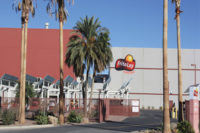Visiting what’s considered this country’s most sustainable production operation—Frito-Lay North America’s Casa Grande snack food plant—I was impressed, to say the least, by such a progressive place.
As you will discover in our feature articles this month, Frito-Lay North America is committed to sustainability by investing in a healthier future for people and its products. The site features advanced solar power capabilities to reuse processed water and it runs almost entirely on renewable energy. Frito-Lay refers to the facility as “Nearly Net Zero.” Since 1999, when the Casa Grande conservation programs were implemented, Frito-Lay has used innovative approaches and technologies to transform the facility so it runs mainly on renewable energy sources to make its products.
The plant generates two-thirds of all of its energy from renewable sources and is working toward signification reductions. Currently, it recycles 75% of its water and reduces 50% of its greenhouse gases and 80% of its use of natural gas. Installed in July 2010, the water-recovery/reuse facility on the plant site combines membrane bioreactor (MBR) and low-pressure reverse-osmosis (LPRO) technology to recycle 50- to 75% of process water. All recycled process water used in the facility meets primary and secondary drinking water standards set by the U.S. Environmental Protection Agency.
The Casa Grande location also uses zero landfill space as of 2010. The facility sends less than 1% of its overall waste to landfills, courtesy of an extensive recycling program and reuses food waste for cattle feed.
Renewable steam is another feature. A newly installed 60,000 lb./hour biomass boiler uses wood (from old pallets, for example) and agriculture waste as its combustion energy source to produce all of the steam needed by the manufacturing plant. The boiler helps reduce Frito-Lay’s natural gas use at the plant by more than 80%. The biomass boiler uses 4,000 lb. of wood waste per hour.
Especially noteworthy is the plant’s renewable electricity system. There are five separate and distinct solar photovoltaic (PV) solar fields positioned throughout the property that generate nearly 10 million kilowatts of electrical power. There are two solar-tracking fields equipped with single-axis tracking PV devices with more than 18,000 solar panels installed on 36 acres of the facility’s agriculture property.
Three additional PV fields were installed, including a dual-axis tracking system, a single-axis covered parking lot (which also shades the cars in carport fashion) and 10 sterling engine dual-axis tracking systems.
In 2009, Frito-Lay Casa Grande became the company’s first snack food manufacturing plant to be Leadership in Energy and Environmental Design (LEED)-certified as 2.0 Existing Building Gold, which is also a first in the state and a first for U.S. snack food manufacturing facilities.
So take a look at our cover and plant features this month to find out more about what Frito-Lay North America’s “greenest” plant—the “greenest” food plant in the country—has to offer in terms best practices that we can all learn from and use.
On another front, we attended the 2012 Institute of Food Technologists (IFT) Annual Meeting & Food Expo, June 25-28, at the Las Vegas Convention Center in Las Vegas. IFT 2012 welcomed more than 18,000 attendees for this year’s event, which featured more than 900 exhibiting companies in five categories and hundreds of subcategories. There was also a significant education platform with more than 100 sessions and more than 1,200 poster presentations and IFT’s Taste the Expo program, which invites visitors to taste and obtain product samples.
This year, the focus was on children’s nutrition, food safety, cleaner labels and affordable ingredients that will enable food manufacturers to create flavorful products with less sugar and sodium and no gluten or genetically modified organisms (GMOs).
These were just some of the food issues addressed. Also presented during the keynote address for the Tuesday morning event were the 2012 IFT Food Expo Innovation Awards, which recognize advancements in the food industry, during the Tuesday morning event. This year’s awards went to:
Advantix Systems, North Miami Beach, Fla., for its liquid desiccant dehumidification and cooling technology, which cuts energy use by 50%; Ampac, Cincinnati, for its recyclable pouch made from a coextruded high-density polyethylene (HDPE) film blend that yields excellent stiffness and strength, barriers to moisture and excellent puncture-resistance; Ecolab Inc., St. Paul, Minn., for its residual antimicrobial coatings (RAC) program, which consists of Environmental Protection Agency-registered products that enhance food safety by providing improved microorganism control; and Glanbia Nutritionals, Fitchburg, Wis., a division of Glanbia plc, for its Optisol 2000 binding system for sugar reduction that can reduce sugar usage by up to 50% in many food applications. Congratulations to all of the winners. SF&WB





